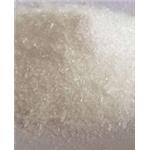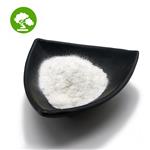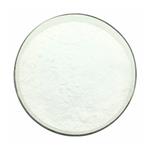- 1,6-Hexanediol
-

- $6.00 / 1KG
-
2024-04-13
- CAS:629-11-8
- Min. Order: 1KG
- Purity: More than 99%
- Supply Ability: 2000KG/Month
- 1,6-Hexanediol
-

- $0.00 / 25kg
-
2024-04-12
- CAS:629-11-8
- Min. Order: 1kg
- Purity: 99%
- Supply Ability: 2000ton
- 1,6-Hexanediol
-

- $0.00 / 1kg
-
2023-12-29
- CAS:629-11-8
- Min. Order: 1kg
- Purity: 99%
- Supply Ability: 1000000
|
| Product Name: | 1,6-Hexanediol | | Synonyms: | HEXAMETHYLENE GLYCOL;HDO(R);1,6-DIHYDROXYHEXANE;1,6-HEXANEDIOL;1,6-HEXYLENE GLYCOL;HDO 1,6-Hexanediol Flakes;1,6-HEXANEDIOL (HDO);1,6-Hexanediol (flake and molten) | | CAS: | 629-11-8 | | MF: | C6H14O2 | | MW: | 118.17 | | EINECS: | 211-074-0 | | Product Categories: | Industrial/Fine Chemicals;HDO;Organic solvents;Organic synthesis intermediates.plasticizer;amine series;Building Blocks;Chemical Synthesis;Organic Building Blocks;Oxygen Compounds;Polyols;alpha,omega-Alkanediols;alpha,omega-Bifunctional Alkanes;Monofunctional & alpha,omega-Bifunctional Alkanes;Optimization Reagents;Protein Structural Analysis;X-Ray Crystallography;629-11-8;bc0001 | | Mol File: | 629-11-8.mol |  |
| | 1,6-Hexanediol Chemical Properties |
| Melting point | 38-42 °C (lit.) | | Boiling point | 250 °C (lit.) | | density | 0.96 | | vapor pressure | 0.53 mm Hg ( 20 °C) | | refractive index | 1.457 | | Fp | 215 °F | | storage temp. | Store below +30°C. | | solubility | H2O: 0.1 g/mL, clear, colorless | | pka | 14.87±0.10(Predicted) | | form | Waxy Flakes | | color | White | | PH | 7.6 (900g/l, H2O, 20℃) | | explosive limit | 6.6-16%(V) | | Water Solubility | 500 g/L | | Sensitive | Hygroscopic | | λmax | λ: 260 nm Amax: 0.1
λ: 280 nm Amax: 0.1 | | Merck | 14,4690 | | BRN | 1633461 | | InChIKey | XXMIOPMDWAUFGU-UHFFFAOYSA-N | | LogP | 0 at 25℃ | | CAS DataBase Reference | 629-11-8(CAS DataBase Reference) | | NIST Chemistry Reference | 1,6-Hexanediol(629-11-8) | | EPA Substance Registry System | 1,6-Hexanediol (629-11-8) |
| | 1,6-Hexanediol Usage And Synthesis |
| Description | 1,6-Hexanediol is a waxy hygroscopic solid compound that is white in colour. The compound is a linear diol that contains two primary hydroxyl groups that are located at the terminal. 1,6-Hexanediol’s linear hydrocarbon chain enables the compound to have enhanced hardness and flexibility of polyesters. Moreover, this property is utilized in the extending chains in polyurethanes.
| | Preparation | 1,6-Hexanediol is produced by a propriety process that is based on BASF technology. Industrially, it is prepared by the hydrogenation of adipic acid. Conversely, in the laboratory, 1,6-Hexanediol can be synthesized by the reduction of adipic acid with lithium aluminum hydride.
| | Uses and Applications | Polyurethanes
1,6-Hexanediol is widely utilized in the manufacture of polyesterols such as sebacates, azelates, and adipates. These compounds are resistant to hydrolysis and have low glass transition temperature as well as high mechanical levels. 1,6-hexanediol is used as an ingredient in the preparation of a wide range of tailor-made products for numerous specialty and standard applications.
In Acrylics
1,6-hexanediol is utilized as an ingredient in the manufacture of the bifunctional hexanediol diacrylate which is a monomer that is normally used in conjunction with other acrylic monomers as a reactive diluent for decorative coatings and printing inks.
In Adhesives
Urethanes and co-terephthalates that are based on 1,6-hexanediol provide faster better tack properties and crystallization. Due to its low glass transition property, 1,6-hexanediol offers high flexibility as well as excellent adhesive properties.
Other Uses
1,6-hexanediol is incorporated into the production of other compounds used in polymeric thickeners, sizing agents, plasticizers for polyvinyl chloride, pesticides, and surfactants dyestuffs as a flexible building block.
| | Safety | 1,6-hexanediol is a no-irritating to the skin. However, it can be irritative to the respiratory tract and mucous membrane. 1,6-hexanediol vapours or dust cause irritation to the eye. Severe eye exposure may cause conjunctivitis, iritis, and diffuse corneal opacity.
| | Quality and Analysis |
The assay of the pure product is about 98 %; impurities are various diols and -caprolactone as well as traces of water. The color number of the product determined photometrically according to the Pt/Co scale must not exceed 15 APHA. Above 70 ℃, 1,6- hexanediol tends to turn yellow.
| | Chemical Properties | white waxy flakes | | Uses | 1,6-Hexanediol can be used for a variety of applications such as:
- a structure-directing agent for the synthesis of ZSM-5 zeolite
- a solvent for titanium tetraisopropoxide to form titanium oxide (TiO2) nanocrystals
- a phase change material in combination with lauric acid for thermal energy storage applications
| | Uses | 1,6-Hexanediol is used in polymer synthesis such as polyester, polyurethane and nylon. It is used as an intermediate to adhesives, acrylics and dyestuffs. Further, it is employed in gasoline refining and pharmaceutical production. | | Uses | Solvent, intermediate for high polymers (nylon,
polyesters), coupling agent, coil coating. | | Production Methods | 1,6-Hexanediol is produced industrially by the catalytic hydrogenation of adipic acid or of its esters. Mixtures of dicarboxylic acids and hydroxycarboxylic acids with C6 components formed in other processes (e.g., in cyclohexane oxidation) are also used. Esterifification of "distillation heavies" with lower alcohols is often carried out before hydrogenation. The acids are hydrogenated continuously at 170-240 ℃ and at 15.0-30.0 MPa on a suitable catalyst either in a trickle-flflow (downflflow) or a bubble-flflow (upflflow) fifixed-bed reactor. The reactor temperature is controlled by circulating part of the reactor discharge. The hydrogen required for the hydrogenation is fed together with the recycle gas through the recycle gas compressor to the reactor. Side products of the synthesis are alcohols, ethers, diols, and esters. Pure 1,6-hexanediol is obtained by fractional distillation of the crude reactor discharge. For the hydrogenation of dicarboxylic acids, catalysts containing cobalt, copper, or manganese are suitable. For the hydrogenation of esters, catalysts such as copper chromite or copper with added zinc and barium are used as "full catalysts" or on inert carriers. Ruthenium, platinum, or palladium on inert supports can also be used. Gas-phase hydrogenation of esters of adipic or 6-hydroxyhexanoic acid can be carried out at 1-7 MPa. Both acids and esters also may be hydrogenated using suspended catalysts. Oligomeric esters of the product diol and adipic acid can also be hydrogenated. | | Definition | ChEBI: A diol that is hexane substituted by hydroxy groups at positions 1 and 6. | | Synthesis Reference(s) | Tetrahedron Letters, 34, p. 243, 1993 DOI: 10.1016/S0040-4039(00)60557-9 | | Hazard | Toxic by ingestion. | | storage | Store at RT. 1,6-Hexanediol in the form of flflakes or as a solidifified melt is stored and shipped in barrels. It is transported as a melt in stainless steel containers, tank trucks, or tank cars. | | Purification Methods | Fractionally crystallise it from its melt or from water. Distil it in vacuo. [Beilstein 1 IV 2556.] |
| | 1,6-Hexanediol Preparation Products And Raw materials |
|